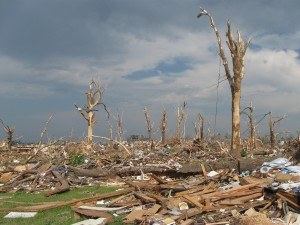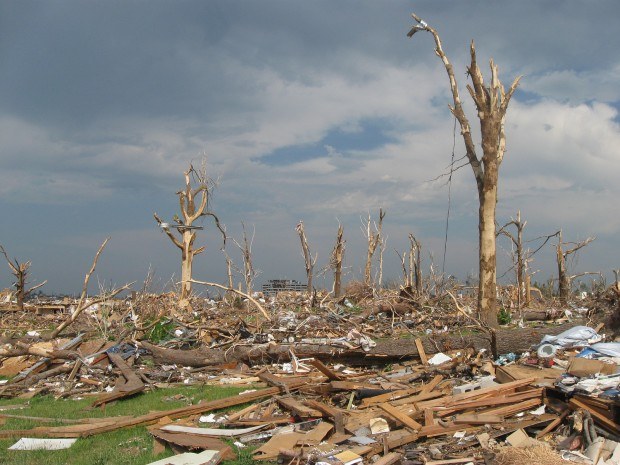 A recent investigation of the effect of terrain elevation changes on a tornado’s path shows tornadoes cause more damage going uphill than downhill.
A recent investigation of the effect of terrain elevation changes on a tornado’s path shows tornadoes cause more damage going uphill than downhill.
Engineering researchers at the University of Arkansas analyzed Google Earth images of the massive 2011 tornadoes in Tuscaloosa, Ala., and Joplin, Mo., and found similarities between the two in behavior and interaction with the terrain.
The analysis led to three major observations about the nature and behavior of tornadoes:
- Tornadoes cause greater damage when they travel uphill.
- Whenever possible, tornadoes tend to climb toward higher elevations.
- When a region is surrounded by hills, tornadoes tend to skip or hop over valleys beneath and between these hills, and damage is noticed only on the top of the hills.
“We wanted to understand the impact of terrain on damage magnitude and tornado path,” says Panneer Selvam, professor of civil engineering. “Information about this interaction is critical. It influences decisions about where and how to build [and] what kind of structure should work at a given site.”
Selvam and civil engineering graduate student Nawfal Ahmed used tornado path coordinates from the National Oceanic and Atmospheric Administration and imposed this data on overlaid Google Earth images. They studied the tornadoes’ damage in depth by comparing historical images to aerial photographs taken after the events.
The data clearly showed that tornadoes cause greater damage going uphill and huge damage on high ground or ridges. Damage decreased as the tornadoes moved beyond the crest of a hill and began going downhill.
The researchers also found that when approaching a geographic intersection, tornadoes climb toward ridges rather than go downhill. With both the Joplin and Tuscaloosa tornadoes, there were several locations where the paths changed direction. At each of these intersections, the tornadoes consistently sought higher ground.
Finally, Selvam and Ahmed discovered that when a region is surrounded by hills, tornadoes tend to maintain a consistent trajectory rather than follow topographical contours, jumping over valleys to hit hilltops and ridges.
The Tuscaloosa and Joplin tornadoes are two of the most deadly and expensive natural disasters in recent U.S. history. On April 27, 2011, the EF4 Tuscaloosa tornado killed 64 people and caused roughly $2.2 billion in property damage. Only a month later, on May 22, the EF5 Joplin tornado destroyed roughly a third of the city, killed 158 people and caused $2.8 billion in damage.
Source: University of Arkansas





















 Executives on the Move at HSB, American Modern Insurance Group, AIG
Executives on the Move at HSB, American Modern Insurance Group, AIG  The Future of Knowledge in Insurance: From Training to AI-Powered Productivity
The Future of Knowledge in Insurance: From Training to AI-Powered Productivity  AI in Property/Casualty Insurance: Why Trusted Data Is the Missing Link
AI in Property/Casualty Insurance: Why Trusted Data Is the Missing Link  Odometer Fraud Sees 14% Jump in the Past Year
Odometer Fraud Sees 14% Jump in the Past Year 






